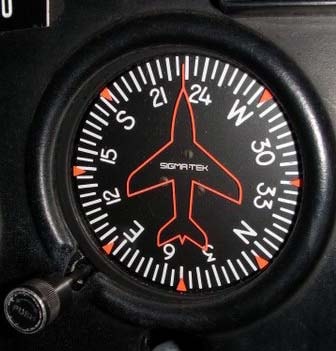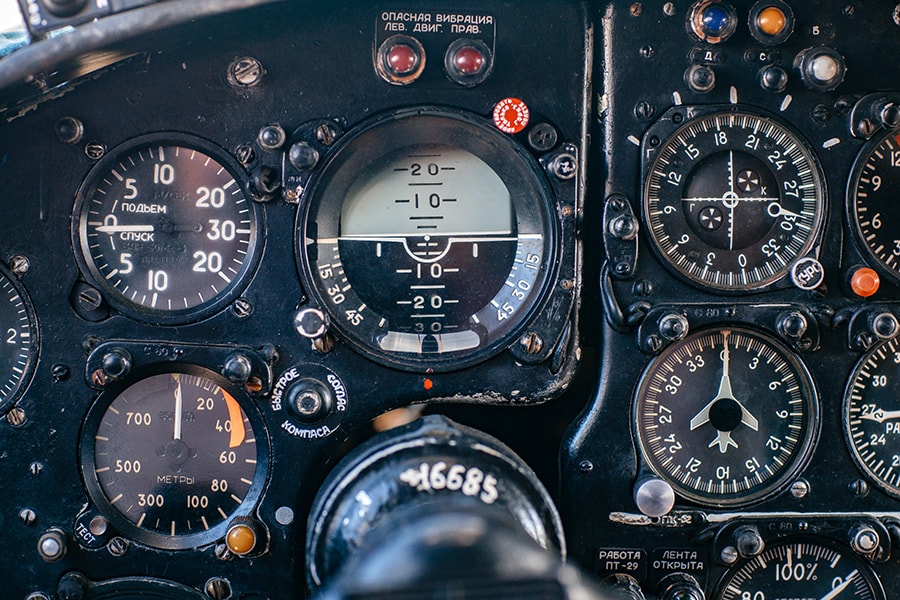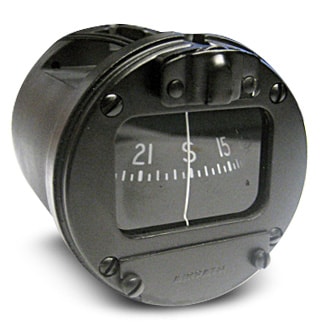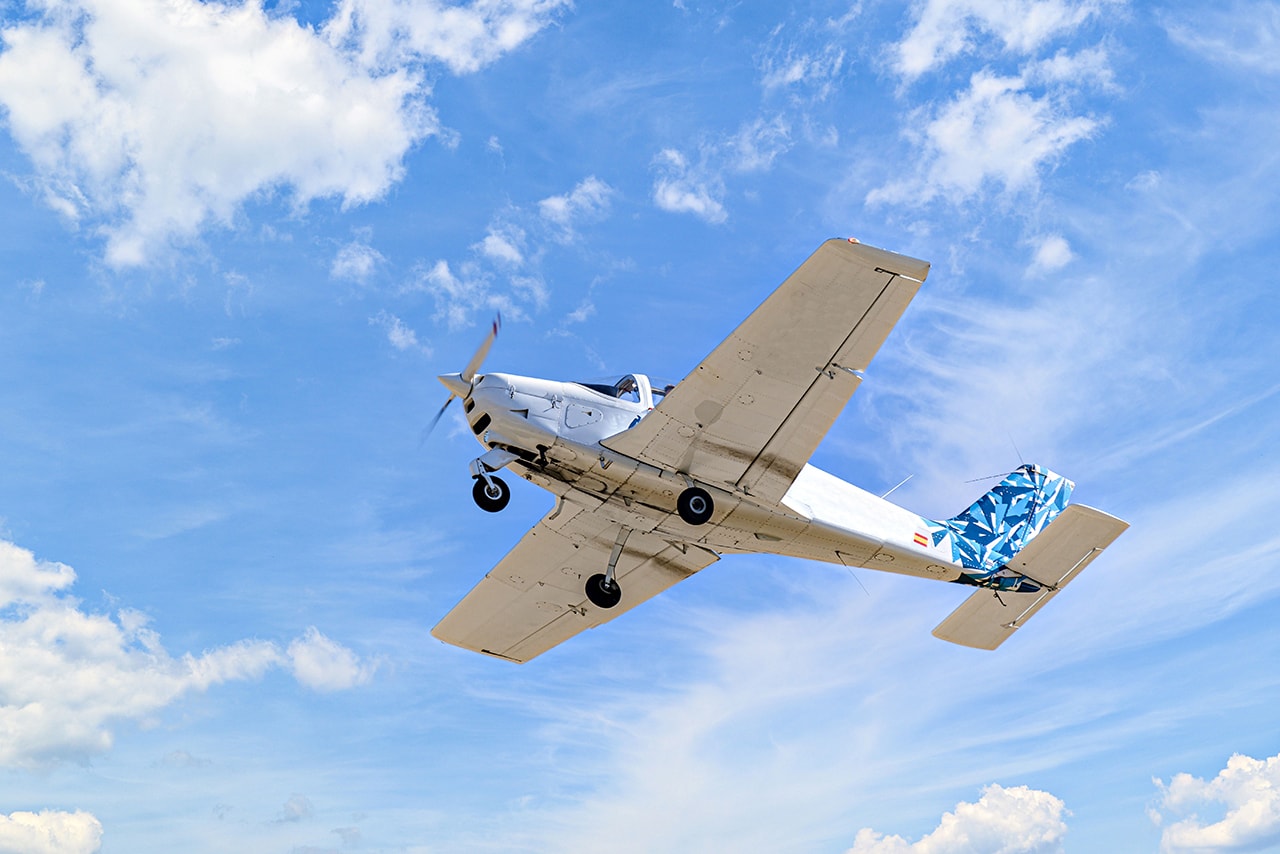Directional Gyro: How it Works and Its Importance
Oct 03, 2024
What is a Directional Gyro Heading Indicator and How Does it Work?
A directional gyro, also called a heading indicator or direction indicator, is a key component of a piston powered aircraft’s navigation system.
It uses a gyroscope to determine the aircraft’s heading and gives the pilot a direction indication throughout the flight. Understanding how the heading indicator works is key to appreciating how reliable and accurate it is in aviation.
The principle behind the directional gyro is a spinning wheel that resists changes to its axis of rotation.
This makes it stable and the compass card in the system can align with the aircraft’s heading.
The heading indicator incorporates a circular compass card calibrated in degrees, which is essential for pilots to periodically reset and correct drift errors caused by various factors affecting the gyroscopic system. However, pilots must also be aware of potential heading indicator errors that can arise over time.
This gives a steady reading that is less affected by external forces and a consistent direction reference for the pilot.
One of the key differences between the directional gyro and a magnetic compass is its independence from the earth’s magnetic field.
This means it is stable and accurate free from magnetic errors, such as those caused by the aircraft’s magnetic fields or the earth’s crust magnetic variations.
By avoiding these problems, the directional gyro gives a clearer and more reliable heading indication.
Despite its advantages, the gyro rotor in the directional gyro can accumulate small, accumulated errors caused over time. These errors are usually due to friction and imperfect balancing of the internal components.
The rotor is powered by filtered air from a vacuum pump, so regular calibration and maintenance are required to get accurate readings and optimal performance.

Importance of Directional Gyros in Aviation
Directional gyros are crucial in aviation as they provide stability and accuracy that a magnetic compass can’t.
Unlike magnetic compasses, which are prone to errors due to magnetic dips and accelerations, directional gyros give you reliable heading information.
This is especially important for new pilots who rely heavily on these instruments to fly the course without magnetic inaccuracies. So, directional gyros make flight operations more precise and safer.
In fact, magnetic compasses often experience dip and acceleration errors during flight, particularly in turns or changes in speed, which can make them unreliable.
The directional gyro, on the other hand, remains unaffected by aircraft movement errors, providing more consistent readings.
To get accurate navigational readings, directional gyros are used with magnetic compasses. During routine in-flight checks, pilots reset the magnetic compass using the gyro as a reference.
This corrects any deviations that may have affected the magnetic compass so pilots can fly with more confidence in their instruments. The relationship between these two instruments is why you need a directional gyro on board.
At high altitude where the earth’s magnetic field is weaker, the importance of the directional gyro is more obvious. High altitude aircraft often use a pressure pump in their gyroscopic instruments, highlighting the need for different technology at higher altitudes.
The gyro’s stable and accurate heading information is crucial to orient the aircraft in difficult conditions.
And even in turbulent weather the gyroscopic heading indicator is steady so pilots have data they can rely on. That’s why directional gyros are essential in modern aviation.

Maintenance and Troubleshooting of Directional Gyros
Regular Maintenance and Routine In-Flight Checks
Directional gyros are critical in aviation and need to be maintained regularly to perform as expected. One of the biggest reasons for failure is bearing issues which can be caused by improper installation or rough handling.
By following a strict maintenance schedule pilots and technicians can head off these issues and extend the life and reliability of the equipment.
Importance of Inspection
Inspection is key to identify and fix problems before they become major. Even a little mishandling – like dropping a gyro less than a quarter of an inch – can cause damage.
This level of sensitivity requires careful handling at all times, installation, storage or shipping.

Prevention of Damage
Heavy landings are another threat to directional gyros and can cause internal damage that affects performance. By educating and warning personnel during these critical times the damage can be minimized.
The emphasis on handling highlights the need for training and awareness when working with sensitive equipment.
Accurate Readings and Apparent Drift
To ensure a directional gyro gives accurate readings, understanding the plane defined by the aircraft's longitudinal and horizontal axes is crucial, and regularly cleaning and inspection is key.
Any dirt or dust accumulation can affect its operation so regular maintenance checks not only prevent failures but also improves the overall accuracy of the device making it an essential tool in aviation.
Misalignment between the aircraft's horizontal plane and the local Earth horizontal can lead to indication errors in the heading indicator, which is where the Horizontal Situation Indicator (HSI) can come into play as a complementary tool for pilots.

Directional Gyros Guide: Top Tips for Pilots
Sync the directional gyro with the magnetic heading, and you’ll get accurate readings.
This simple step ensures the aircraft is always pointed in the right direction and prevents navigation errors from compass vs instrument differences.
Adjust the latitude nut for apparent drift. This drift is defined by the formula ω sin Latitude and is most pronounced at the poles. Adjusting it keeps you precise and stable in flight.
Check the directional gyro during your in-flight checks. Consistency is key to detecting deviations or failures early and to keep the equipment working well throughout the flight.
And finally, with the circular compass card, which is degree calibrated, pilots can read the aircraft’s heading. By using this precise tool, pilots can fly their routes with confidence and make air travel safer and more efficient.

Conclusion
The directional gyro is key to aviation safety and efficiency. It gives you heading information so you can fly precise even in tough conditions.
The directional gyro reduces the errors of magnetic compasses. It makes you more accurate and more confident throughout the flight. It makes the gyro more reliable.
Follow best practices, sync and maintenance and the directional gyro will perform at its best. This proactive approach will help you perform at your best during flight.
Precision in aviation is not just for success but also for safety. Pilots and passengers will benefit from the detailed and informed use of the directional gyro.

